When a storm passes through, your roof is often the first line of defense against the elements. After the winds die down and the skies clear, it’s important to assess your roof for any damage that could affect your home’s safety and integrity. Ignoring potential roof damage can lead to costly repairs down the road. At Pinnacle Roofing, we’re committed to helping homeowners protect their investment, so we’ve put together this simple guide on how to spot roof damage after a storm.
1. Look for Missing or Damaged Shingles
One of the most common signs of storm damage is missing or damaged shingles. High winds, heavy rain, and hail can cause shingles to blow off, crack, or curl. Take a look at your roof from the ground (using binoculars if necessary) and check for any visible gaps, missing shingles, or curled edges. Damaged shingles expose the underlying layers of the roof, leaving your home vulnerable to leaks and further damage.
2. Check for Dents and Cracks
Hail storms can be particularly damaging to roofs, as hailstones can dent or crack shingles, tiles, or metal roofing. If you notice any unusual marks, indentations, or cracks on your roof, it’s important to address them right away. These blemishes can compromise your roof’s ability to protect your home and may lead to leaks or further deterioration.
3. Inspect for Leaks or Water Stains
After a storm, check your attic for any signs of leaks. Water stains, dampness, or mold growth on the ceiling or walls inside your home may indicate that your roof has been compromised. Pay special attention to areas around vents, skylights, and chimneys, as these are common places where water can enter. If you see any of these signs, it’s crucial to act quickly to prevent further water damage.
4. Examine the Flashing Around Chimneys and Vents
Flashing is the material that seals joints on your roof, such as around chimneys, vents, and skylights. Strong winds and heavy rain can loosen or damage flashing, allowing water to seep into your home. Inspect the flashing for any signs of rust, separation, or damage. If the flashing is compromised, it can cause serious leaks that may go unnoticed for a long time.
5. Check the Gutters for Debris
Your gutters play an important role in redirecting rainwater away from your roof and foundation. After a storm, check your gutters for debris such as leaves, branches, or shingle granules. A buildup of debris can clog the gutters, leading to water backup and potential roof damage. Clean out your gutters regularly to ensure that they’re functioning properly and to prevent water from pooling on your roof.
6. Look for Cracked or Broken Tiles (For Tile Roofs)
If you have a tile roof, be on the lookout for cracked or broken tiles after a storm. The weight of hail or strong winds can cause tiles to break or shift out of place. These damaged tiles leave your roof vulnerable to leaks and should be replaced as soon as possible.
7. Check the Roof’s Structural Integrity
In extreme cases, a storm may cause structural damage to your roof. If you notice sagging, buckling, or warped sections of the roof, it could be a sign that the roof deck or support beams have been compromised. This kind of damage is serious and requires immediate attention from a professional roofer.
8. Keep an Eye on the Roof’s Edge
The edges of your roof are particularly vulnerable during a storm. Check for any signs of damage, such as missing trim, broken eaves, or exposed roofing material. If the roof edge is damaged, water can easily seep underneath the roof covering and cause further damage to your home.
9. Know When to Call a Professional
While some damage can be spotted from the ground, it’s always a good idea to have a professional roofer assess the condition of your roof after a storm. Roofing experts, like the team at Pinnacle Roofing, have the experience and tools to safely inspect your roof and identify hidden damage that may not be immediately visible.
If you suspect roof damage but aren’t sure of the extent, it’s always better to be cautious. A professional roof inspection can uncover issues before they lead to bigger, more expensive problems.
Why Choose Pinnacle Roofing for Storm Damage Inspections?
At Pinnacle Roofing, we understand the stress that comes with storm damage. Our experienced team is here to help you through the insurance claim process and ensure that your roof is in top condition. We offer thorough roof inspections, detailed damage assessments, and expert repairs to restore the integrity of your roof and protect your home.
Final Thoughts
After a storm, don’t wait too long to assess the condition of your roof. Early detection of damage can save you time, money, and potential headaches. If you’re not sure where to start or need help inspecting your roof, Pinnacle Roofing is just a call away. We’re here to help you keep your home safe and secure, no matter what the weather brings.
Contact Pinnacle Roofing today for a free roof inspection and let us help you ensure your roof is storm-ready!


